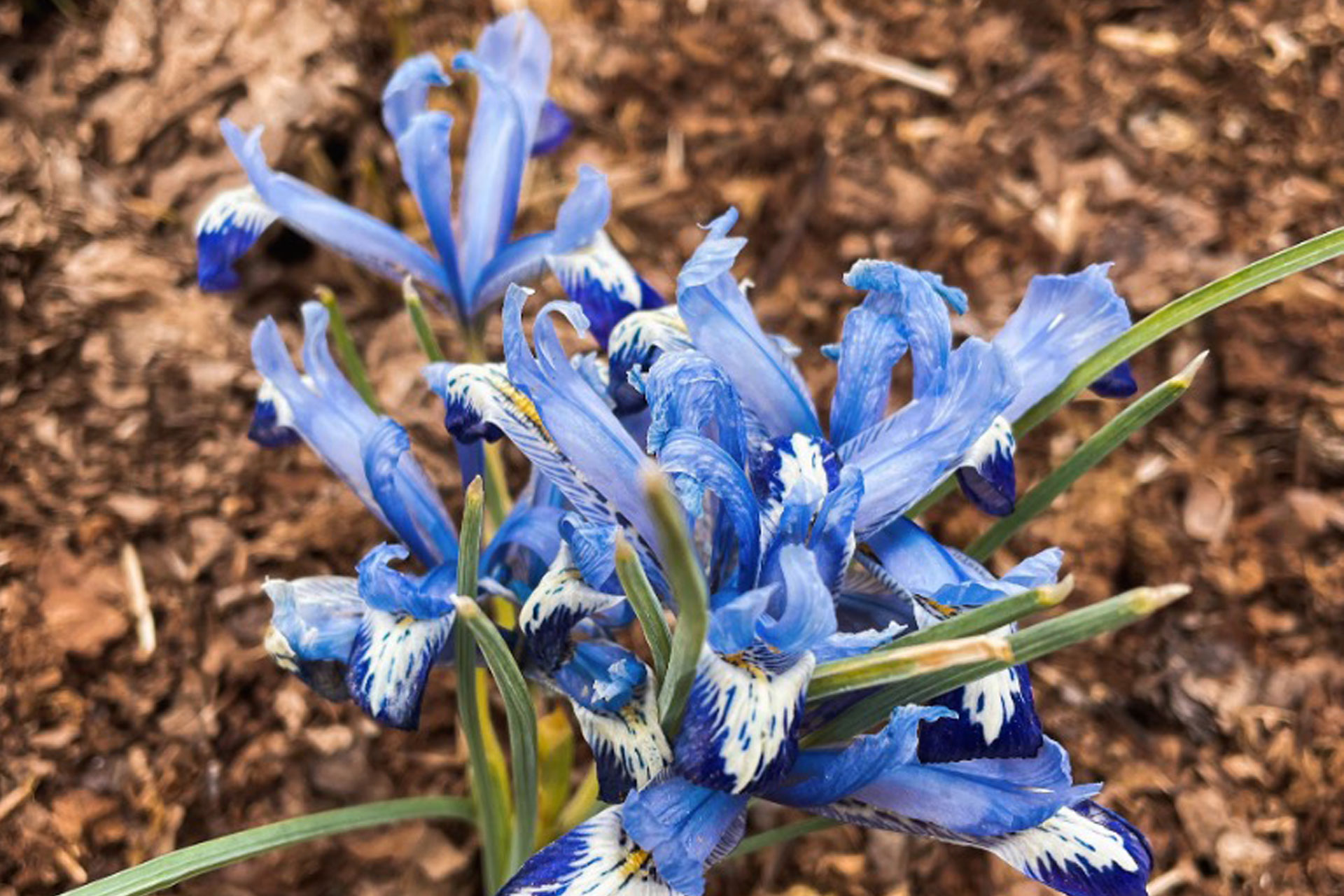Having grown up Jewish, I never planned to go to Germany, but when I fell in love with a German (don’t worry, we’ve since broken up), that changed. I decided to accompany him to his home in Bavaria in March of 2023. People kept asking what I planned to do there. I had no idea, having never thought about it.
Tucked away in the Sinn Valley, between the western Rhon mountains of Southwest Bavaria is the town of Bad Bruckenau.
The tiny spa town was originally settled during the reign of Charlemagne, who came into power just before the year 800. Around 1600, the town was given its current name when a bridge (bracken) was built over the Sinn River. Bad is German for bath.
A curiously sour-tasting well in town became known by the fifteenth century for its healing properties. In the mid-eighteenth century, the Bishop built a fountain for better access. His successor built hotels for those who had begun to make the pilgrimage in search of healing. During this period, two more wells were discovered. Brückenau became part of the Kingdom of Bavaria in the early nineteenth century. King Ludwig I was a fan, and financed a renovation fit for, well, himself. It’s even rumored that he carried on his extramarital affairs at this countryside escape.
After the German Revolution several decades later, Ludwig abdicated and left his much loved spa and the castle he’d built there behind. The government then leased the property to the private sector.
The entire campus is currently owned by the Dorint Hotel Group. The neoclassical style of the buildings, planned by architect Johann Gutensohn, influenced the design of spas across Southern Germany.
The old town surrounding the campus, or /Altstadt/, boasts pubs and inns dating back to the sixteenth century.
Today, the town is famous for its healing waters and is also home to two high-end drug and alcohol treatment centers.
The centers flank the Dorint campus, and as one rolls through the impossibly green hills, past cows and horses and tidy, fairytale cottages, the idea of doing anything but luxuriating seems preposterous.
Once checked in, I stepped onto the patio to survey the expanse. To the right stood a pub dating back hundreds of years, still serving lunch. Across, all the original buildings arranged themselves around an emerald rectangle. Beyond that, Ludwig’s gardens and the very first signs of spring, or, as they say on the Rhôn, Frühling.
Tiny blue irises poked through the dry earth despite the sunless sky.
The spa remains the focal point of the experience, spread out over three floors and thirty thousand square feet.
One must use their room key to enter the complex. Beyond the door, one is greeted and handed a towel. Before the steam of the pools and baths there is a delightful café. The breakfast and dinner buffets are a bacchanalian cornucopia of regional delights, but in the afternoon, light headed by the steam heat, there are cold quinoa salads and organic bergamot soda. Or, if you are feeling particularly European or hope to presently be an Aperol Spritz.
Beyond the cafe, the main floor of the spa boasts a heated swimming pool that is at once in and out of doors, a wide passageway connecting the two, while a clear divider keeps warm in. On the side of the pool, in fresh air, steam slowly rises and seems to fall to the side.
One thing I was surprised about was the lack of a hot tub. I was told repeatedly how warm the pool was, but I wanted to feel like I was in a Crock Pot, so I continued along.
Also, of course, the pool is the unofficial children being children area, and that is their business.
On the next floor, there is a quiet room that reminds me of the first episode of the second season of Succession, which opens at a remote Icelandic wellness retreat.
The first thing one notices upon opening the door is the absolute absence of sound. Chaise lounges complete with reading and charging stations are laid out stadium seating style, tiered down toward a wall of windows that opens into forest.
People read, nap, meditate, and check their phones, but nobody, not even the rain, makes a single noise.
This could absolutely never happen in the states and may never happen again now that this article exists. It was so quiet in there I felt as if you could somehow HEAR that I was American. It was quieter than the Sistine Chapel, in which guards stand around simply to enforce this rule, but unfortunately Brad from Texas has Google, and screams out “CAN YOU IMAGINE THIS PLACE ON MUSHROOMS MAN?”
The next floor might be more to his taste. It’s Europe, so the floor of various saunas is co ed, though children under a certain age are not permitted. Everyone is nude. I watched a man ogle a young woman in dismay until I realized that she was his girlfriend. That I found very romantic. Hooks and cubbies held our robes and books and room keys as people passed in and out of various heat and humidity levels.
There was a line for the krauterbad, which means herbal bath in German.
While herbalism is enjoying a resurgence in America, it never left in Germany — fresh herbs that don’t have culinary but rather medicinal value like Lemon Balm are available at the regular grocery store.
The center of the room held a pagoda. Inside, a frog intermittently spits hot water into a pile of dried herbs. Around the room are six notches carved into the wall. It’s disorienting — and somewhat feels like a steam bath version of Epcot. I have spent my entire life in liberal coastal bubbles. Is this okay? I found myself wondering. Is it okay if I enjoy this herbal steam despite its cultural appropriation? The Chinese Frog and the German Herb Bath is a fairytale nobody wants to write.
In between saunas, I tried the sour-tasting water that started it all. Four spigots, each named for who was in power when that well was discovered, are down a hallway by the saunas. Above each is the name. Ludwig was my favorite, but I think it’s supposed to be. I’ve tried purported healing waters in the past, drinking directly from the spigot at Tirta Empul in Bali, but it’s always tasted like…well, water. The mineralwasser in Bad Brückenau is unlike anything else I’ve sipped.
The hotel enjoys the distinction of being the only one in the region whose products hold an organic certification. They even have their own sheep and cows! The next morning, stumbling bleary-eyed down to the buffet, we were met with the most beautiful marriage of old-world hospitality and new-world culinary expertise. I tried eight different kinds of bread, scooped honey from its comb, and sampled various local sausages. Remember how proud of himself Trump looked a few years ago over a whole boatload of McDonald’s? That look of pride belongs here.
The only thing I liked more than the breakfast buffet was the dinner buffet.
The next day, my companion wanted to go on the walk he used to take regularly when he was in treatment nearby. Germans love to walk for no reason. In Los Angeles, when we walk that long through that kind of terrain, we call it hiking. It gives gravitas. But Germans will just say, “I go on a walk,” and call it “Eine Kleine Wanderung,” or “A Little Wandering,” and then they go off on some six-hour odyssey like it’s nothing.
I embarked on this odyssey, yes. But I did not act like it was nothing.
An hour or so in, we entered a forest that was a cemetery. I’d never seen or heard anything like this. Some of the trees were so, so tall. On each one, a plaque. Beneath each tree, a person was buried. The hush and the slowly falling leaves felt as if they went on forever. Beyond that, the path opens back toward town, passing by farmland, a chance to see the village up close.
The trail let us out at a residential treatment center that sits on a hill above the Dorint. As we walked the wide, low steps down, the first flowers.
Under a canopy of gnarled, leafless trees, handfuls of snowdrops pushed through new grass.
Not a bad place to stop, as the friends we met there had, as a halfway point between Frankfurt and the Swiss Alps.



